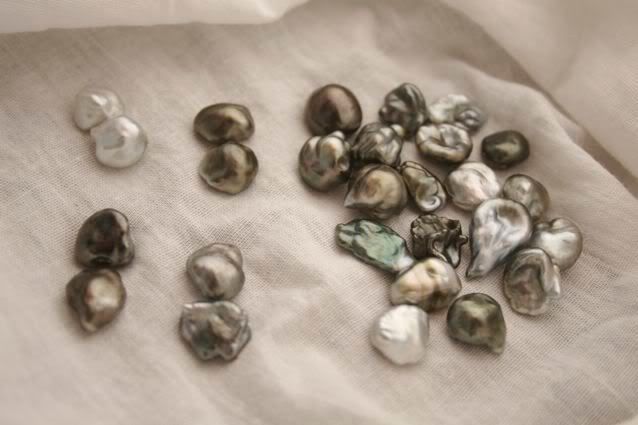jshepherd
Pearl Paradise
- Joined
- Jun 22, 2004
- Messages
- 6,344
Supply of large Tahitian pearls has been dropping significantly over recent years. While large, black round 15mm and above were once not such a rarity, pearls 14mm and over are becoming increasingly scarce. Pearls larger than 14mm now only account for 5 to 7 percent of total French Polynesian output, according to a report in Jewelry News Asia.
Large Tahitian pearls are almost exclusively the product of what is referred to as 2nd graft, or 2nd generation pearls. These pearls are not the first produced, they are a result of re-seeding the existing pearl sac after harvest. When a large round is harvested, a nucleus can be immediately inserted into the existing pearl sac without the addition of grafting tissue.
The reason for the dramatic drop in production is quite simple. Farmers are not producing 2nd generation pearls. From the outside it would appear as though production is commonsense. But with it grinding to a halt, it is clear that benefits do not always outweigh the risks.
Producing a 2nd generation Tahitian pearl is extremely difficult. First, a large shell of at least 12cm must be used to accommodate the large nucleus. Even with this shell selection, mortality rates are double that of 1st generation. Coupled with a high mortality rate, nucleus rejection is as high as 50%. In order to combat this rejection ratio, shells are laid flat in baskets instead of horizontally in net panels, or on line systems. They then must be turned every month and a half to balance the nacre growth, increasing the workload tremendously.
In spite the difficulties, pearls are produced. But even after all of this additional work, the results are often less than appealing. 2nd generation Tahitian pearls are often heavily spotted, and rarely have the luster of their 1st generation counterparts. Farmers are simply not able to sell production for reasonable profit at current market pricing.
Over the next few years it is clear that large Tahitian pearls will grow even more scarce. If market pricing corrects itself, farmers may take more of a chance with 2nd generation. If they do not, the chapter of the large Tahitian pearl will soon be closed.
Large Tahitian pearls are almost exclusively the product of what is referred to as 2nd graft, or 2nd generation pearls. These pearls are not the first produced, they are a result of re-seeding the existing pearl sac after harvest. When a large round is harvested, a nucleus can be immediately inserted into the existing pearl sac without the addition of grafting tissue.
The reason for the dramatic drop in production is quite simple. Farmers are not producing 2nd generation pearls. From the outside it would appear as though production is commonsense. But with it grinding to a halt, it is clear that benefits do not always outweigh the risks.
Producing a 2nd generation Tahitian pearl is extremely difficult. First, a large shell of at least 12cm must be used to accommodate the large nucleus. Even with this shell selection, mortality rates are double that of 1st generation. Coupled with a high mortality rate, nucleus rejection is as high as 50%. In order to combat this rejection ratio, shells are laid flat in baskets instead of horizontally in net panels, or on line systems. They then must be turned every month and a half to balance the nacre growth, increasing the workload tremendously.
In spite the difficulties, pearls are produced. But even after all of this additional work, the results are often less than appealing. 2nd generation Tahitian pearls are often heavily spotted, and rarely have the luster of their 1st generation counterparts. Farmers are simply not able to sell production for reasonable profit at current market pricing.
Over the next few years it is clear that large Tahitian pearls will grow even more scarce. If market pricing corrects itself, farmers may take more of a chance with 2nd generation. If they do not, the chapter of the large Tahitian pearl will soon be closed.

